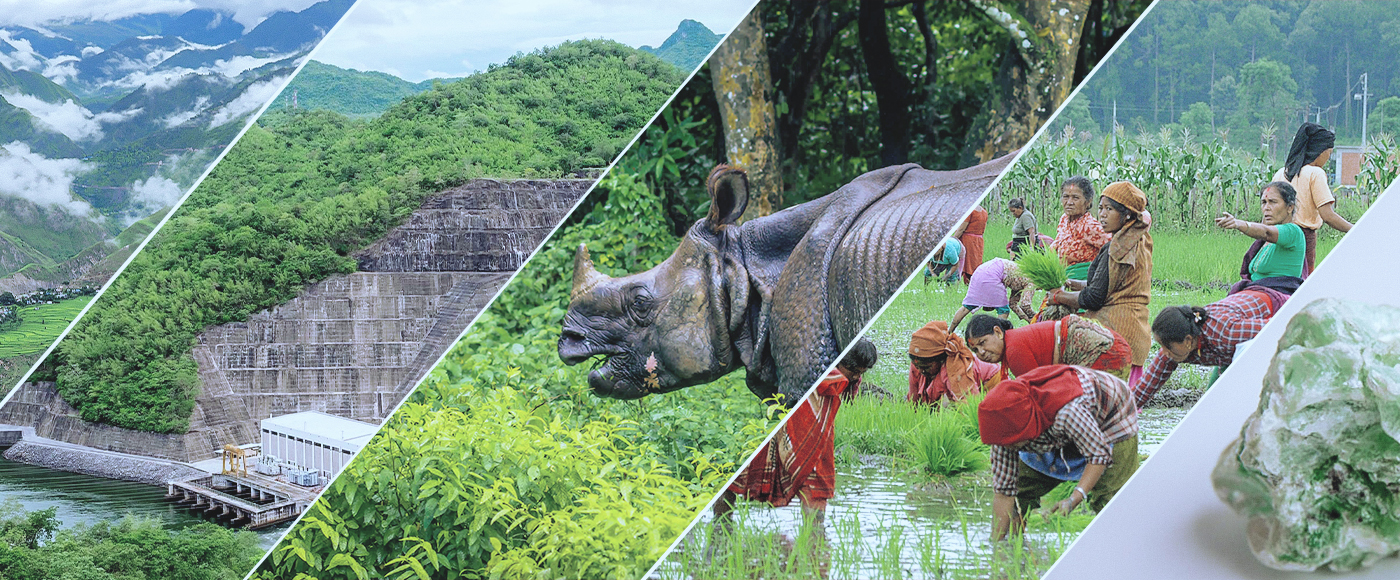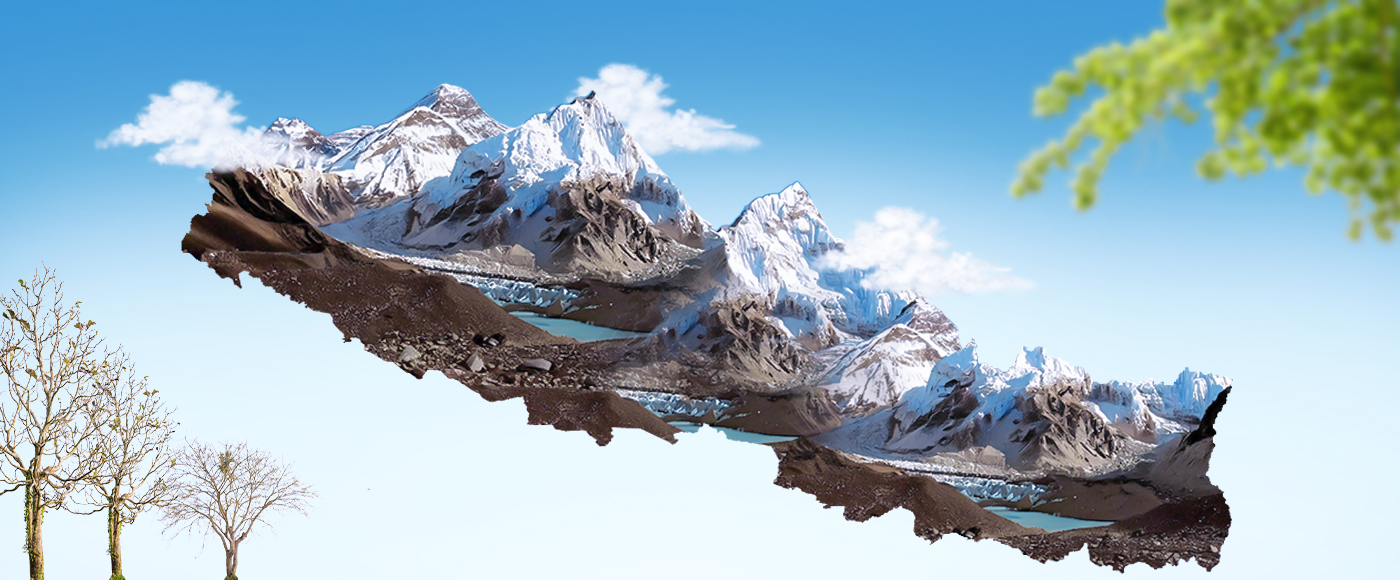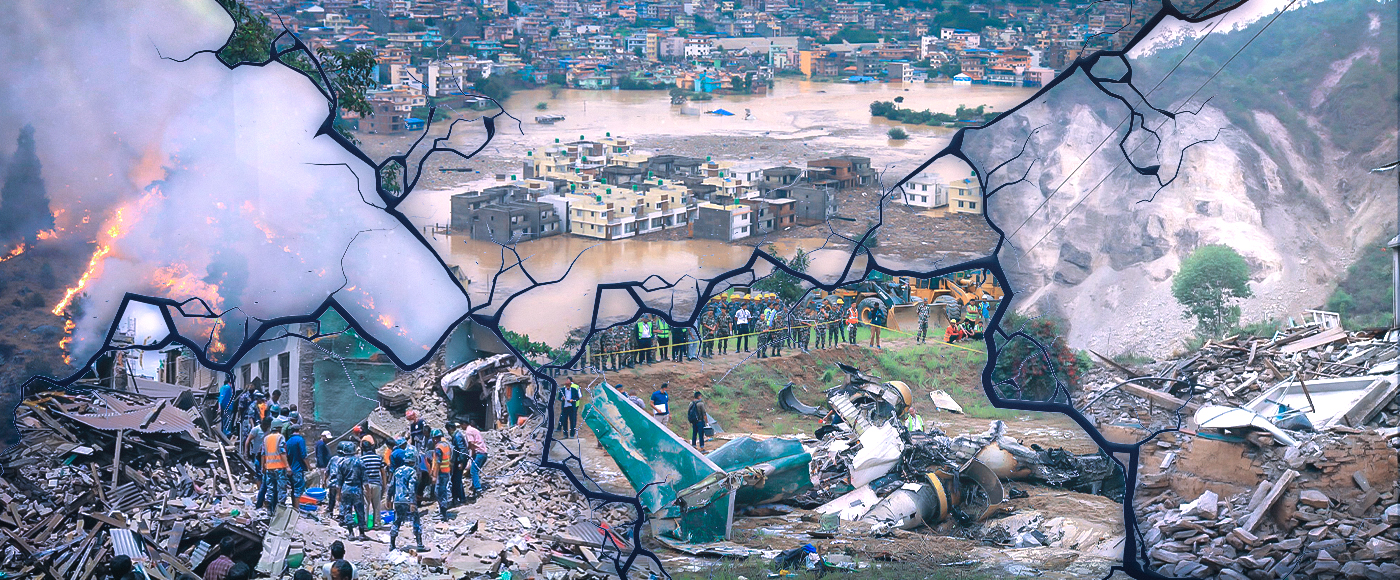Land Use
The following table presents the land use in Nepal. The data indicates a significant decline in the proportion of agricultural land over the past six decades, from 96.5% in 1961/62 to 89.5% in 2021/22. This reflects a shift from farming to non-farming land uses. Rural outmigration, unplanned urbanization, infrastructure development, climate change, economic activities, land degradation, and remittance are the major factors that collectively contribute to the ongoing trend of converting agricultural land to non-agricultural uses in Nepal. Land policies that prioritize equitable and sustainable development are needed.
Table 1: Land Use in Nepal
 Source: - National Agriculture Census, 2021/22, National Statistics Office (NSO)
Source: - National Agriculture Census, 2021/22, National Statistics Office (NSO)
The following chart shows the agricultural land area at the provincial level. The distribution of agricultural land in Nepal reveals significant disparities among provinces, with Koshi and Madhesh provinces collectively accounting for nearly half of the total agricultural area, indicating challenges for food security and regional agricultural policy implementation.
Chart 1: Agricultural Land Area by Province (Area In '000 Hector), 2021
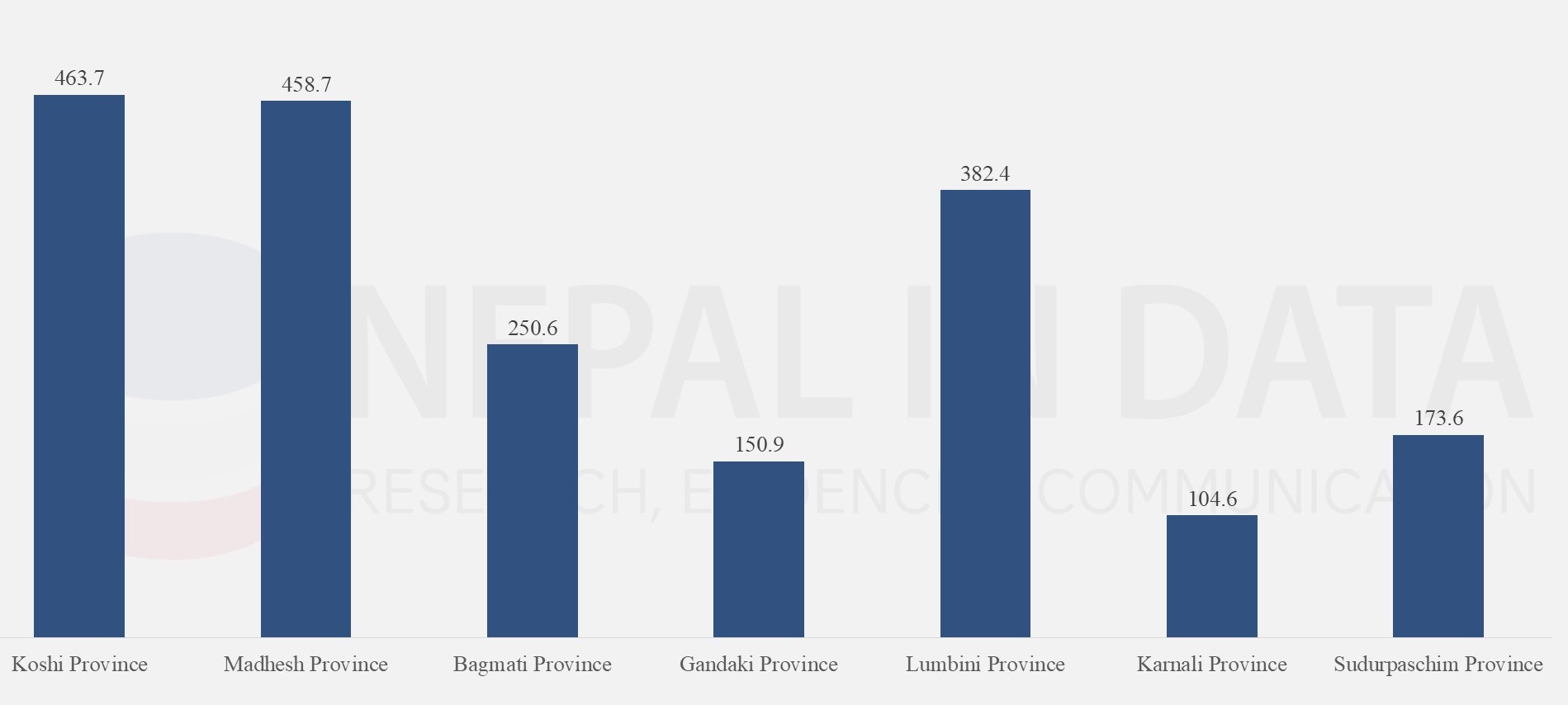 Source: - National Agriculture Census, 2021/22, National Statistics Office (NSO)
Source: - National Agriculture Census, 2021/22, National Statistics Office (NSO)
Production of Agricultural Commodities
Table 2 shows the production trends of major agricultural commodities in Nepal from 2015/16 to 2021/22. The production of Paddy is in an increasing trend up to 2020/21 but it has decreased from 2021/22 by nearly 9 percent. Maize and potato production increased steadily, while the production of sugarcane is declining continuously. Wheat, millet, oilseeds, and vegetables have shown gradual growth. Tea production has remained stable, while coffee production is slightly increasing. Targeted policies are required to enhance crop resilience, promote sustainable agricultural practices, and support farmers in adapting to changing conditions to ensure food security and stability.
Table 2: Production of Major Agricultural Commodities in Nepal (‘000 Metric Tonne)
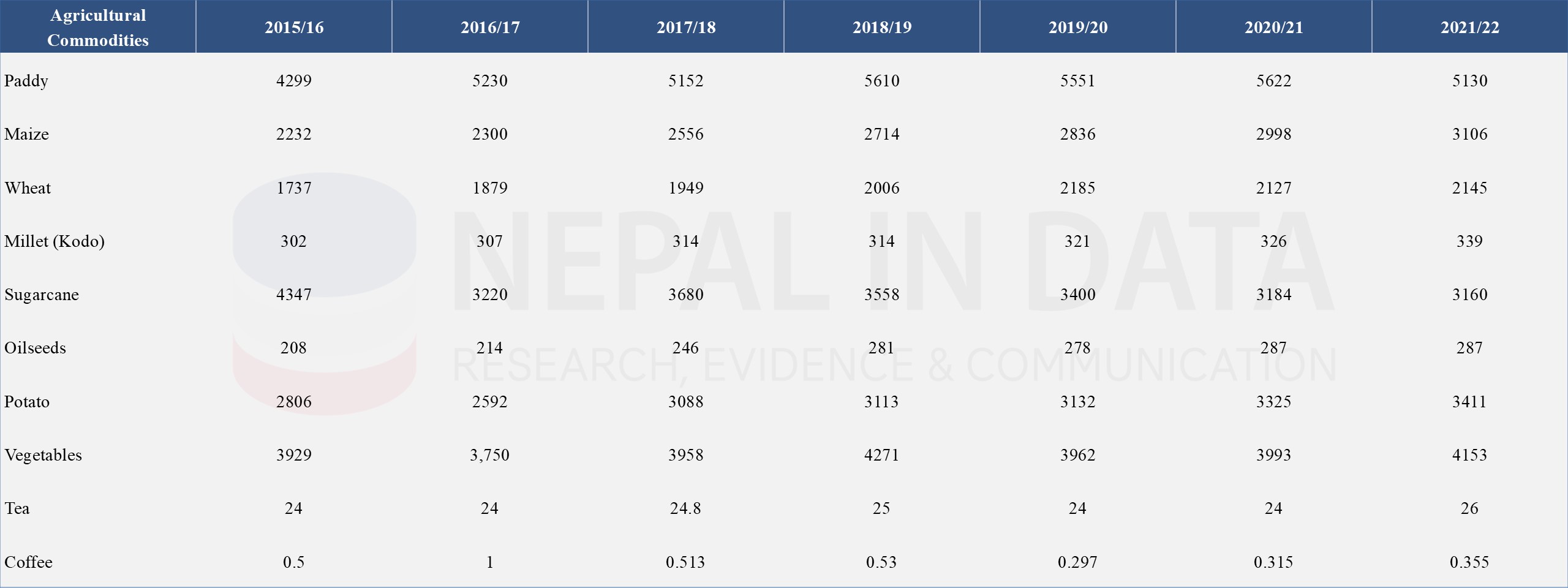
Source: - Statistical Information on Nepalese Agriculture 2078/79 (2021/22). Ministry of Agriculture & Livestock Development (MoALD)
Livestock
Due to the diversity of climate and geography various types of livestock exist in Nepal. The Decennial Agriculture Census provides information about the livestock. The livestock population has grown significantly from 1981/82 to 2021/22, tripling of total livestock numbers within this period. Chicken saw exponential growth, increasing six-fold. Overall, the number of poultry and goats is increasing while livestock like cattle and buffaloes are decreasing. This shows there the changes in traditional agricultural practices in Nepal. The growth in poultry indicates a higher demand for meat and eggs. These trends show a change in consumption habits in Nepal and can be linked with urbanization and changing economic conditions.
Table 3: Number of Livestock by Type in Nepal
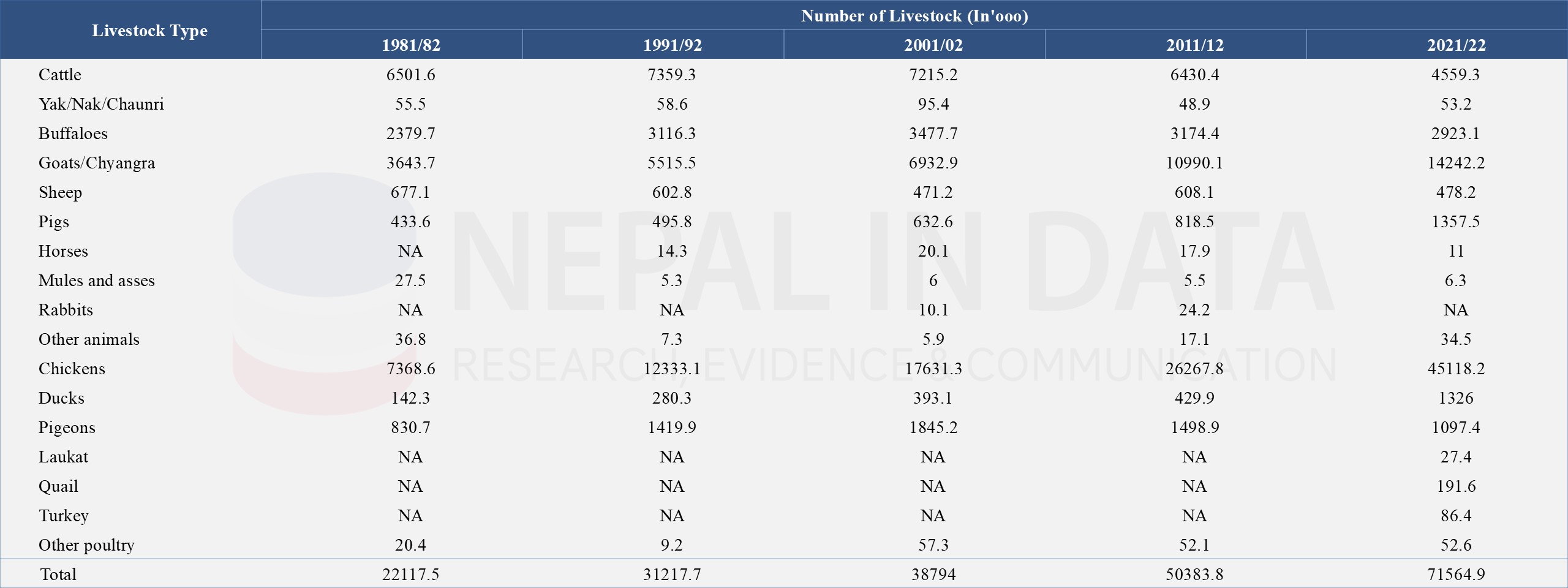 Source: - National Agriculture Census, 2021/22, National Statistics Office (NSO)
Source: - National Agriculture Census, 2021/22, National Statistics Office (NSO)
The major productions of livestock are milk, meat, eggs, fish, and wool. Table 4 shows the production trends of livestock products in Nepal from 2015/16 to 2021/22. The production of milk, meat, eggs, and fish has been an increasing trend from 2015/16 to until now.
Table 4: Production of Livestock
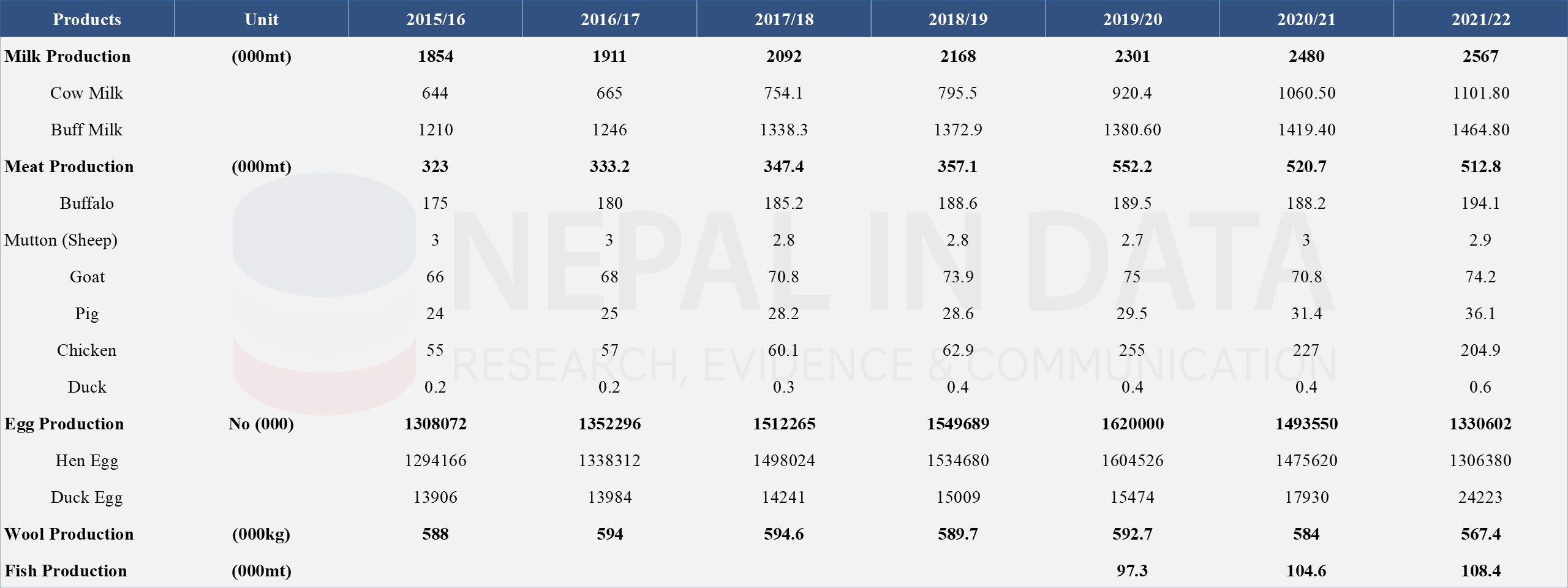
Source: - Statistical Information on Nepalese Agriculture 2078/79 (2021/22), Ministry of Agriculture & Livestock Development (MoALD)
Forest
Table 5: Forest Coverage by Province, 2015
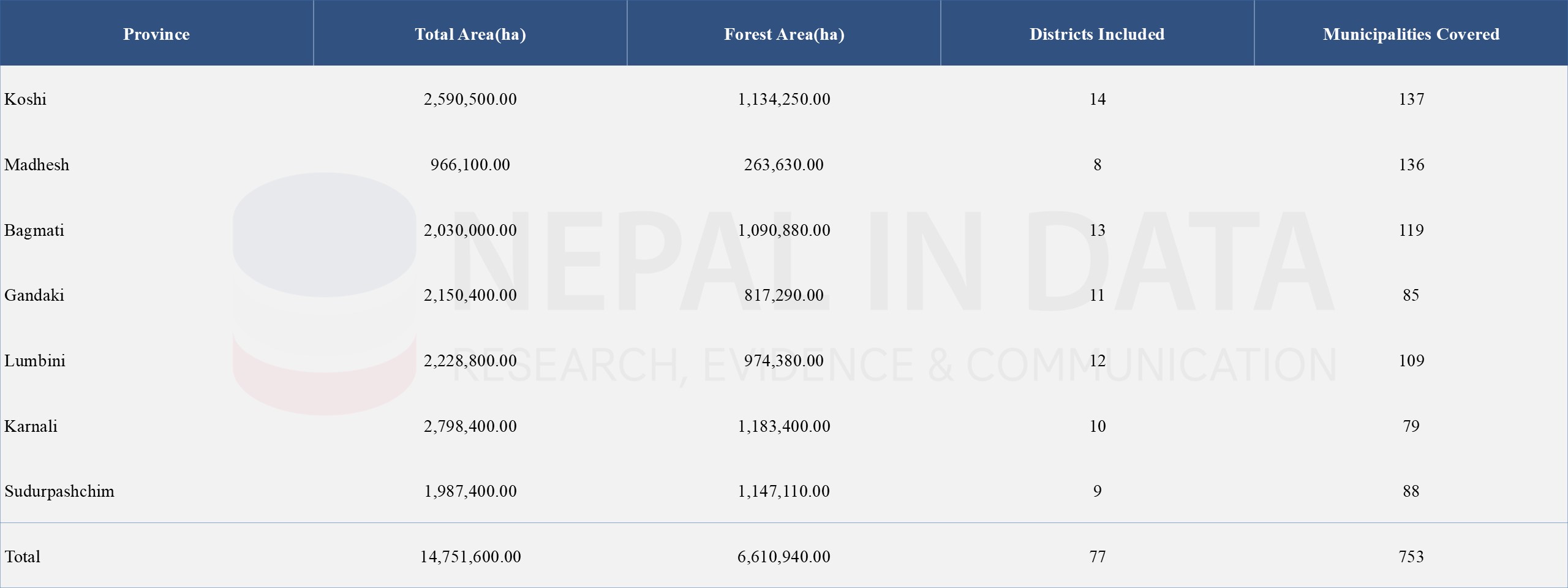 Source: - Environment Statistics of Nepal, 2024, National Statistics Office (NSO)
Source: - Environment Statistics of Nepal, 2024, National Statistics Office (NSO)
The above table presents forest coverage by province in Nepal. Karnali Province has the highest forest area while Madhesh Province has the lowest. Energy, agriculture, tourism, and transport are the major sectors where forest contributes directly or indirectly and contributes especially to poverty reduction in rural areas. The major challenges to managing sustainable forests are deforestation, degradation, natural disasters, and low investment in the forestry sector. It is necessary to implement targeted policies to address these challenges and assist local communities who are directly and indirectly dependent on forest resources for their livelihoods.
Table 6: Changes in the Status of Community Forestry
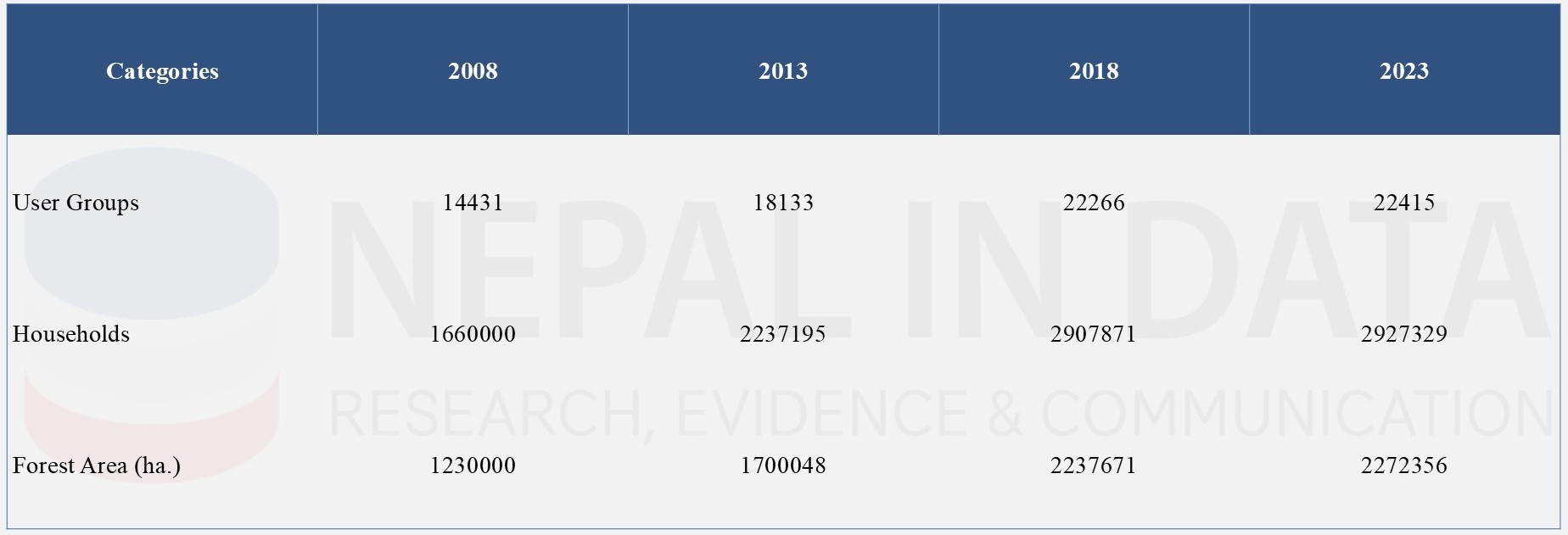
Source: - Environment Statistics of Nepal, 2024, National Statistics Office (NSO)
Table 6 shows the total user group of community forestry until 2023. As the households grow, the user groups are also growing. Growth was significant initially but slowed down between 2018 and 2023. Demand for forest resources is growing. It is necessary to promote community engagement and equitable access to forest benefits by sustainable forest management.
Table 7: National Parks, Wildlife Reserves, and Conservation Areas of Nepal
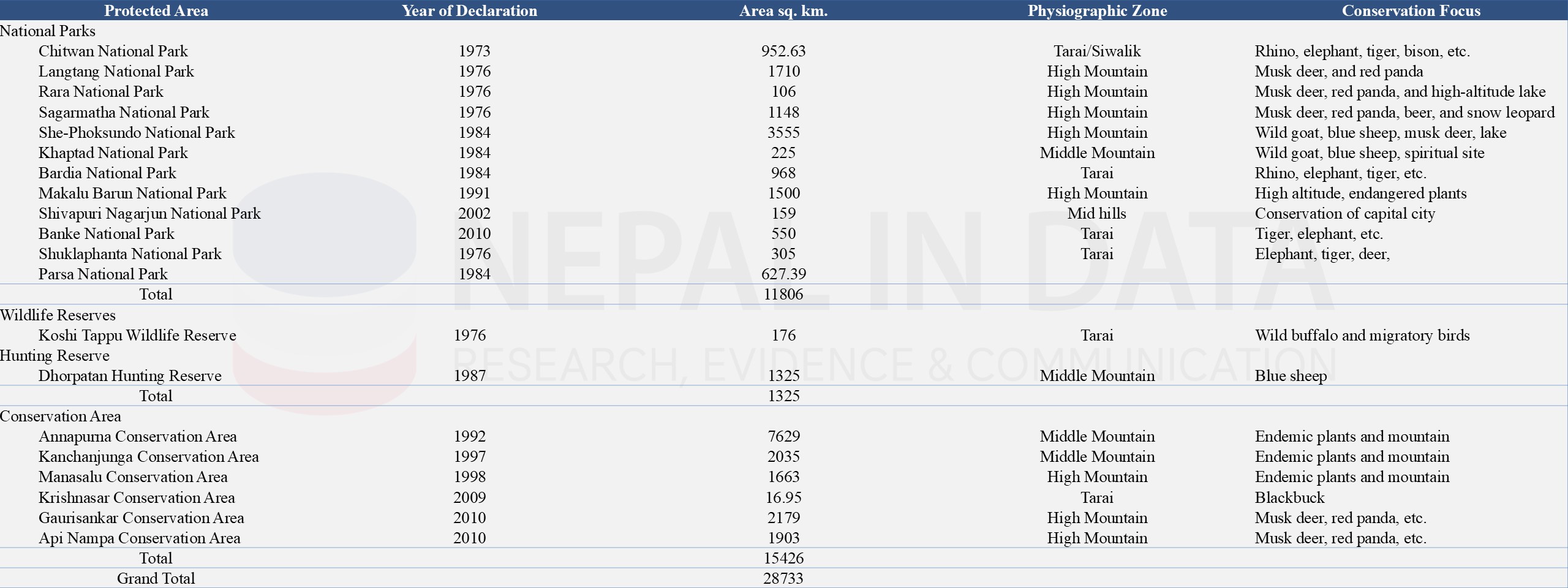 Source: Department of National Parks and Wildlife Conservation
Source: Department of National Parks and Wildlife Conservation
The total protected area of Nepal is 28 thousand 7 hundred 33 square km; out of this the National Park covers 11806 sq. km. and other protected area covers 16927 sq. km. These areas are crucial for biodiversity conservation, ecosystem services, tourism, climate resilience etc. However, challenges such as poaching, habitat degradation, and human-wildlife conflict exist now. To address these issues, it is essential to implement existing laws strictly, strengthen community engagement, and promote sustainable tourism practices.
Ecosystems in Nepal
Nepal is rich in natural resources, having diverse ecosystems such as forests, grasslands, wetlands, high mountains, the Himalayas, and lowland plains. These ecosystems provide essential habitats for flora and fauna, as well as valuable goods and services for both local communities and the country. Chart 2 shows that in all six different physiographic zones of Nepal, there are a total of 118 Ecosystem exits.
Chart 2: Ecosystems in Nepal, 1995*

*Biodiversity profile project
Source: Ministry of Forest and Soil Conservation (National Biodiversity Strategy and Action Plan 2014-2020)
Table 8: Nepal Land Cover Statistics Between 2000 and 2019
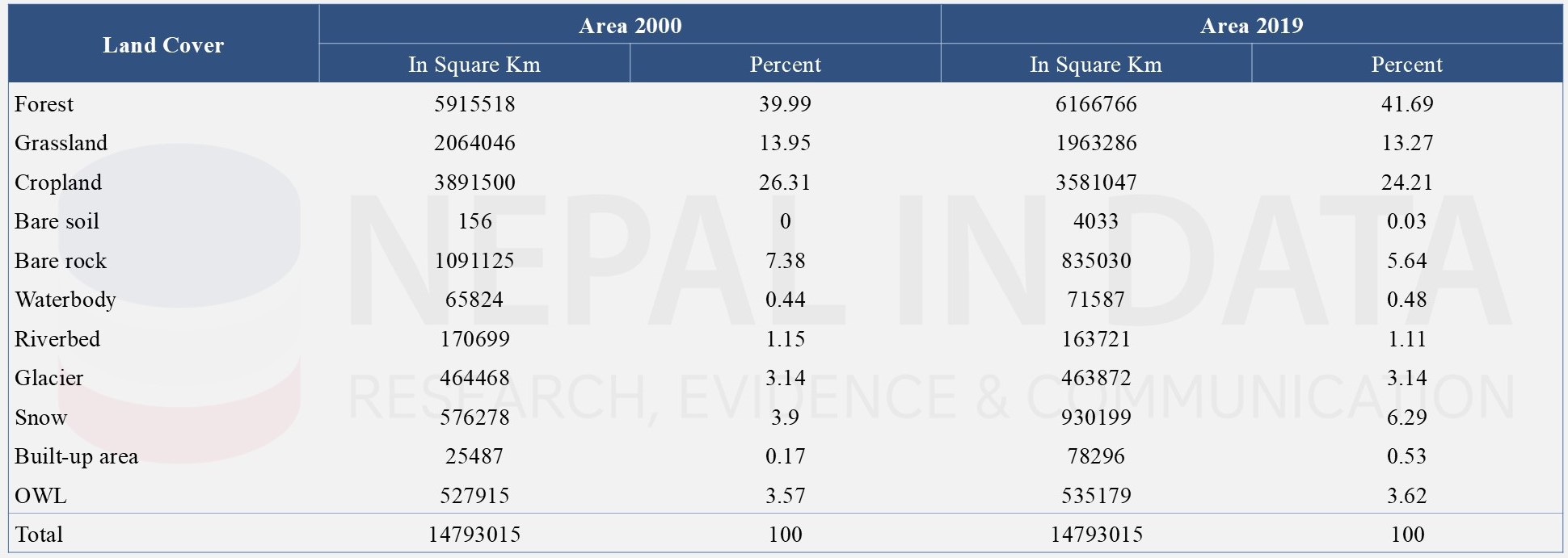
Note: - NLCMS used the mapped area of 147930.15km2 applying the Lambert Conformal Conic map projection. Forest Research & Training Centre (FRTC (2022))
Source: - National land cover Monitoring system of Nepal (2022)
Table 8 shows a comparative analysis of land cover between 2010 and 2019 in the allocation of different land cover types. There has been an increase in forest, snow cover, and built-up areas, whereas a decrease in cropland, bare rock, and grassland. These changes reflect processes like afforestation, urban expansion, and possibly climate change impacts.
The following Table 9 presents some key forest resource indicators like area and types of forest and the number of trees.
Table 9: Forest Resource Statistics of Nepal
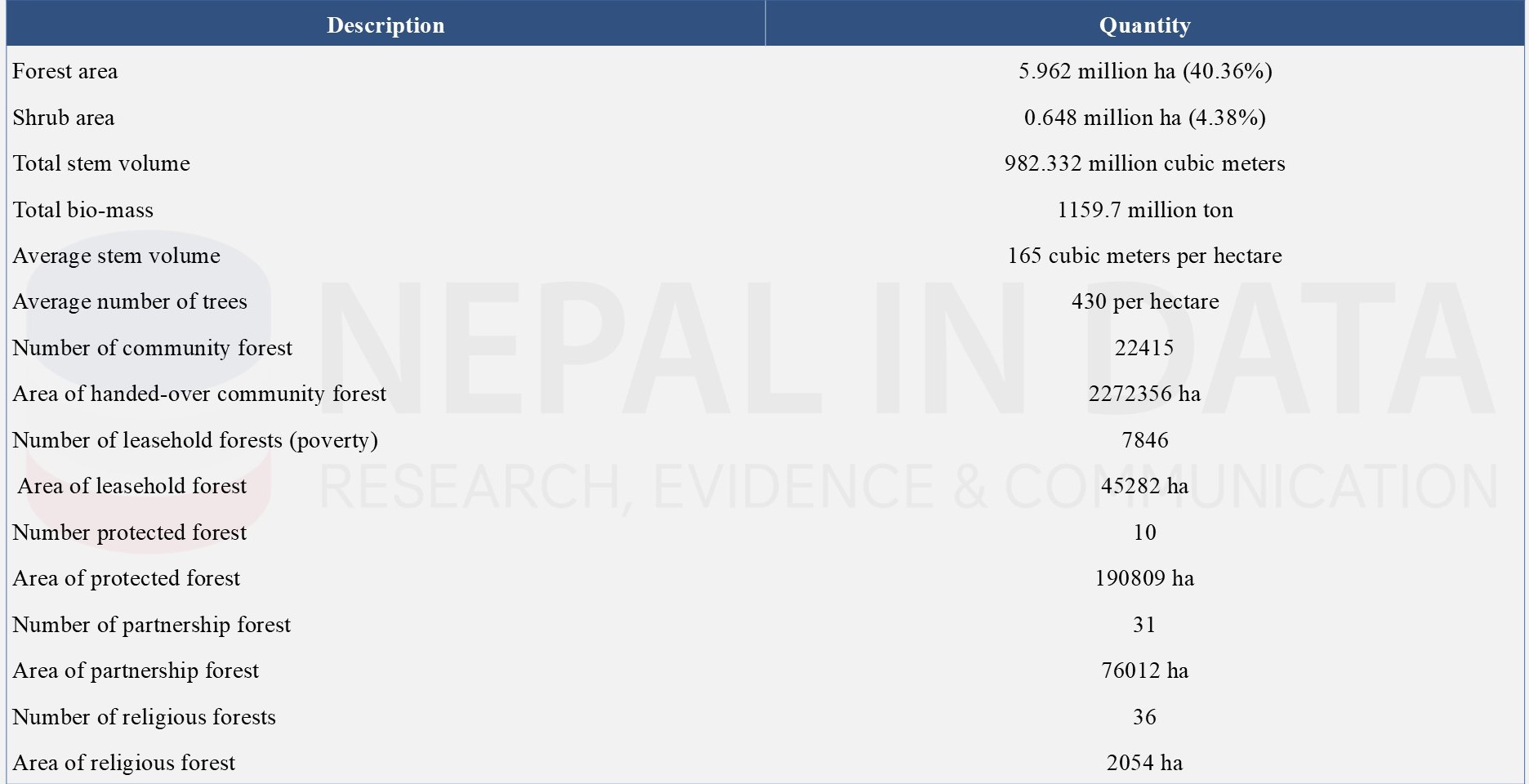 Source: - Environment Statistics of Nepal, 2024, Forest Research & Training Centre (NSO)
Source: - Environment Statistics of Nepal, 2024, Forest Research & Training Centre (NSO)
Minerals
Table 10: Primary Production and Import of Coal in Nepal
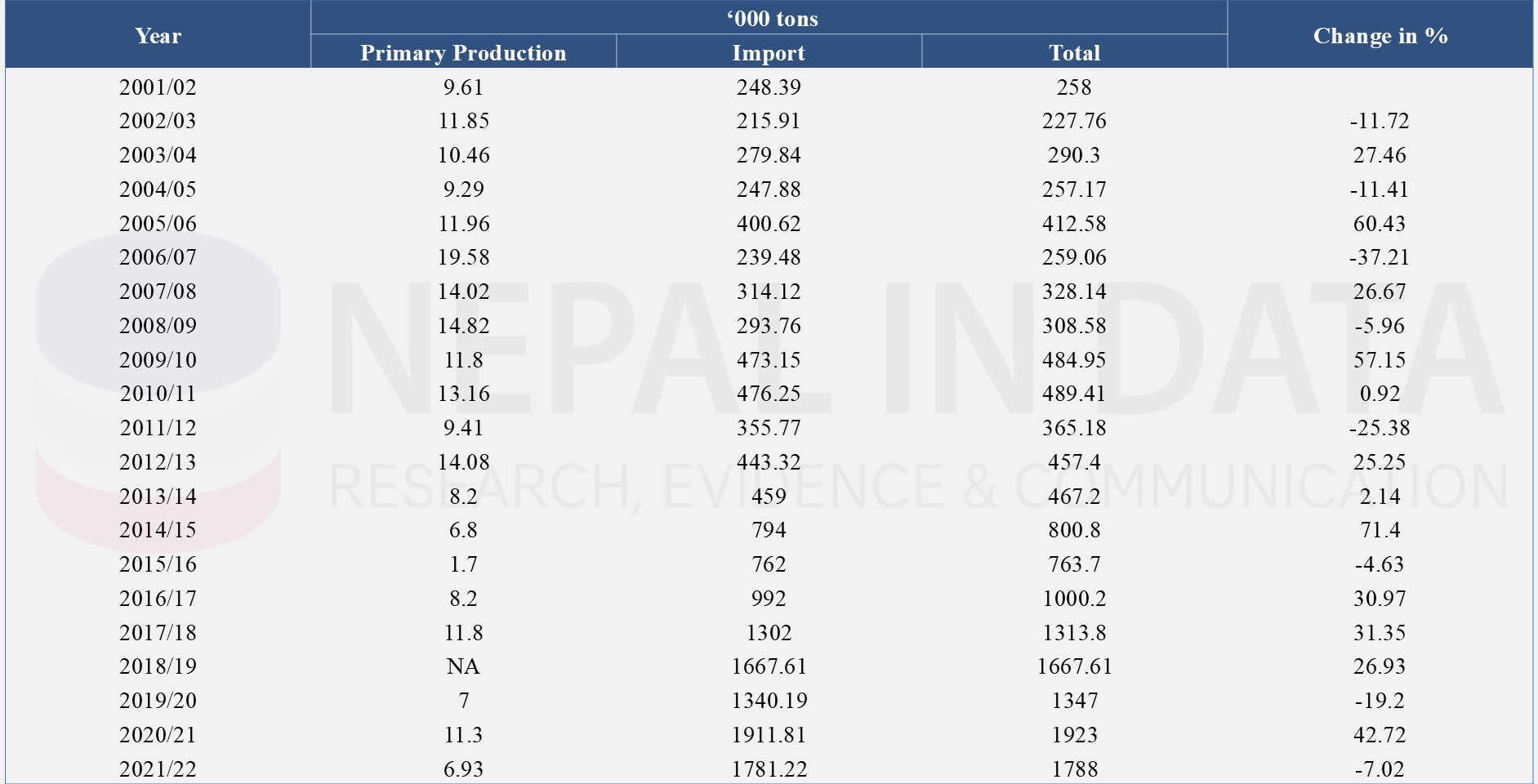 Source: Department of Mines & Department of Customs
Source: Department of Mines & Department of Customs
A small amount of coal is extracted in Nepal. 1,923,000 tons of coal was used in 2020/21, with most of it being imported. Less than 0.01% of the coal used was domestically extracted. In 2021/22, both imported and extracted coal decreased by nearly 7%.
Water Resources and Hydropower
The following table shows the 14 major hydropower stations of Nepal. The total hydropower generated by the Nepal Electricity Authority (NEA) up to fiscal year 2023/24 is 578.624 MW. Kaligandaki A being the largest at 144 MW, followed by Middle Marsyandi (70 MW) and Marsyandi (69 MW). These 14 major hydropower stations contribute 97 percent of the total generation.
Table 11: Major Hydropower Station of Nepal, 2023/24
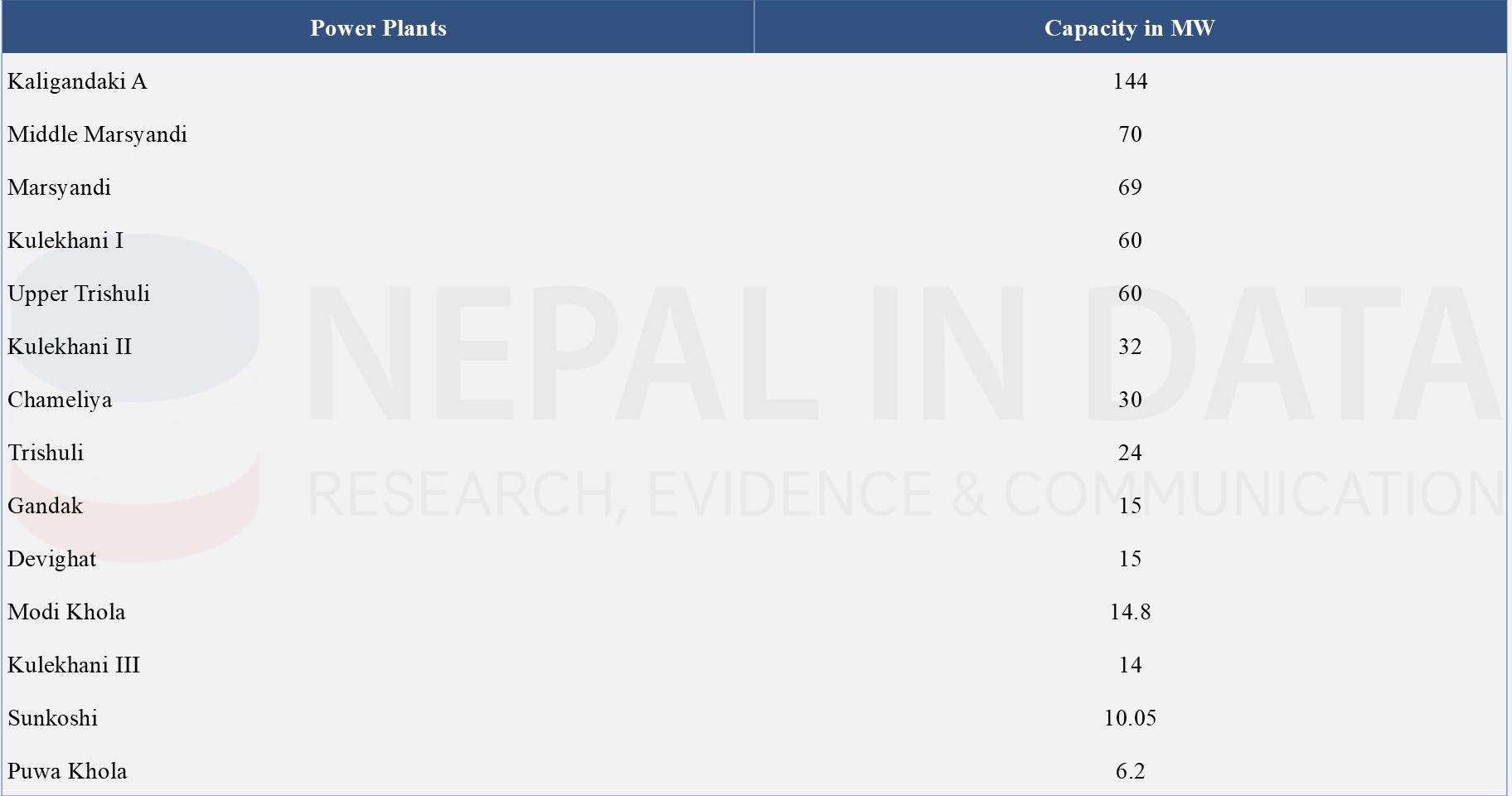
Source: - Annual Report 2023-24, Nepal Electricity Authority
Depletion in Water Sources
The following table shows a detailed breakdown of the various reasons behind the decreased water sources observed in the last 25 years in Nepal. 47.7 percent of the households of Nepal reported insufficient rainfall as the primary reason for the decrease in water resources followed by drought (20.3 percent). Policies targeting water resource management, sustainable land use, and community resilience to mitigate these issues need to be promoted.
Table 12: Household (%) Reporting Reasons for Depletion in Water Sources over Last 25 Years, 2022
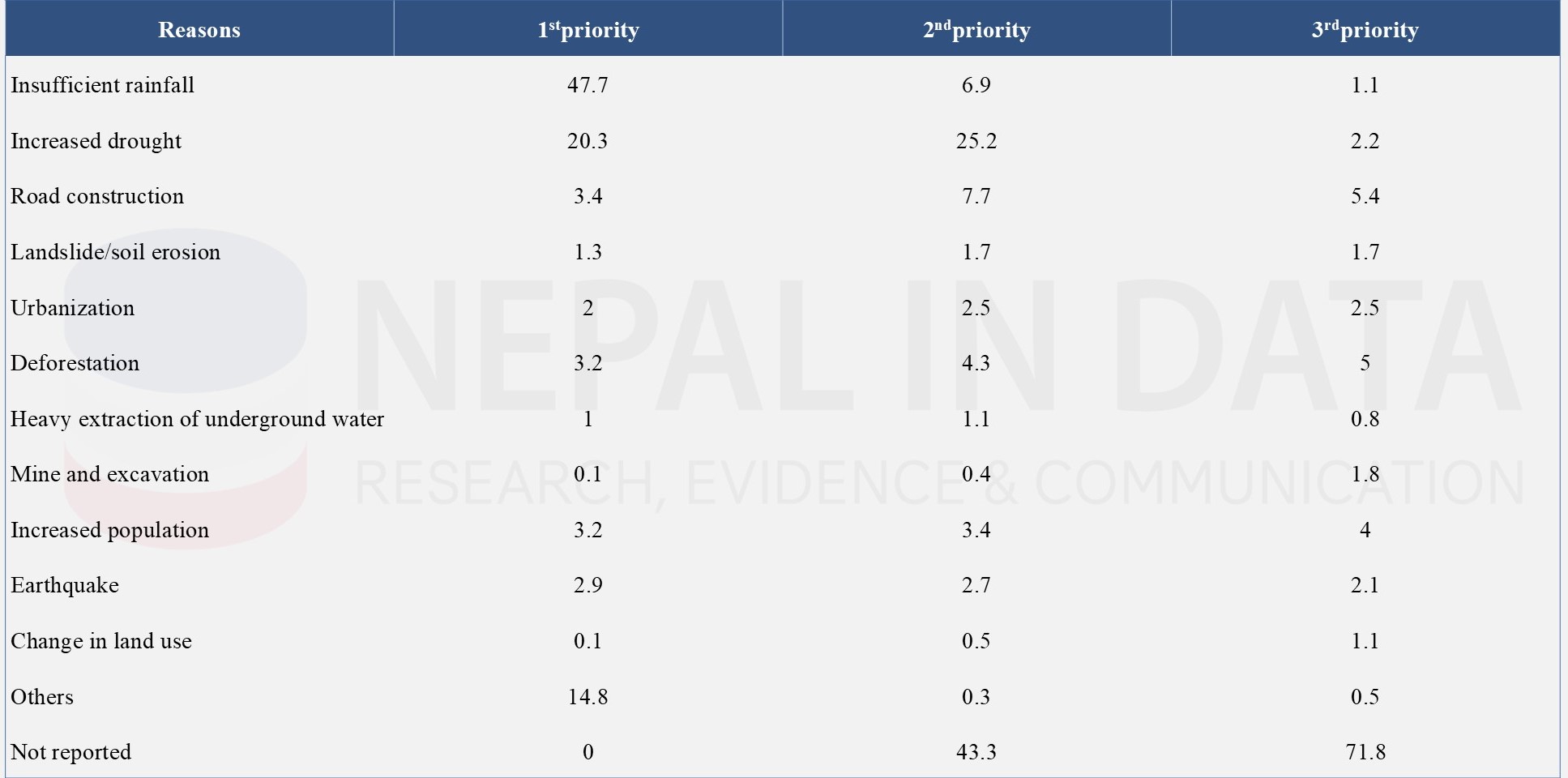 Source: National Climate Change Survey (NCCS) 2022, National Statistics Office (NSO)
Source: National Climate Change Survey (NCCS) 2022, National Statistics Office (NSO)
Energy
The following chart shows the consumption of various fuel types in Nepal from 2000/01 to 2022/23. Consumption of petrol, diesel, LPG, and aviation fuels has increased, while the use of kerosene has significantly decreased. It is necessary to reduce petroleum usage by utilizing renewable energy sources that are more environmentally friendly, as well as to stimulate the local economy.
Chart 3: Consumption of Petroleum Products in Nepal (in kl & L. P. Gas (mt))
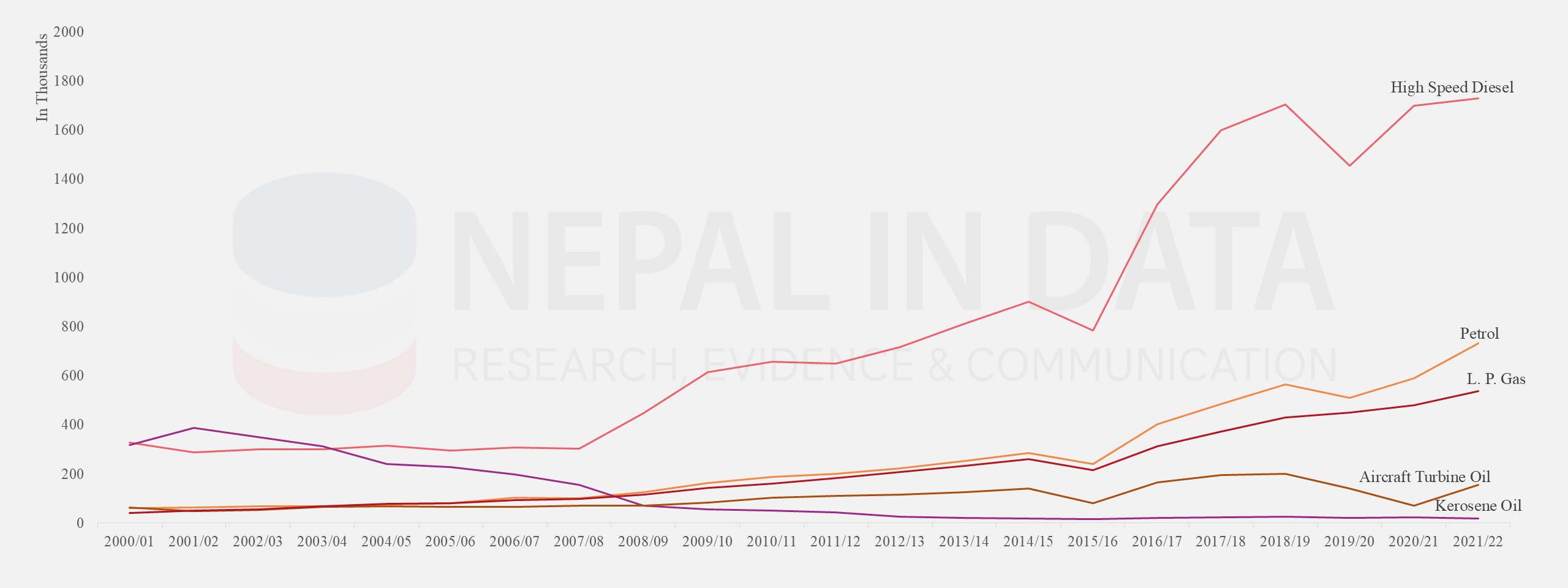 Source: - noc.org.np, Nepal Oil Corporation Limited
Source: - noc.org.np, Nepal Oil Corporation Limited
The following table presents the energy consumption in Nepal from 2014/15 to 2021/22, categorized into traditional, commercial, and renewable sources. Traditional energy sources, including firewood, agricultural residues, and cow dung, have remained the primary energy sources, with firewood as the major contributor. There has been a significant increase in commercial energy consumption, indicating growing industrial and transportation needs. Consumption of electricity nearly doubled, reflecting expanded electricity availability and use.
Table 13: Energy Consumption by Sector
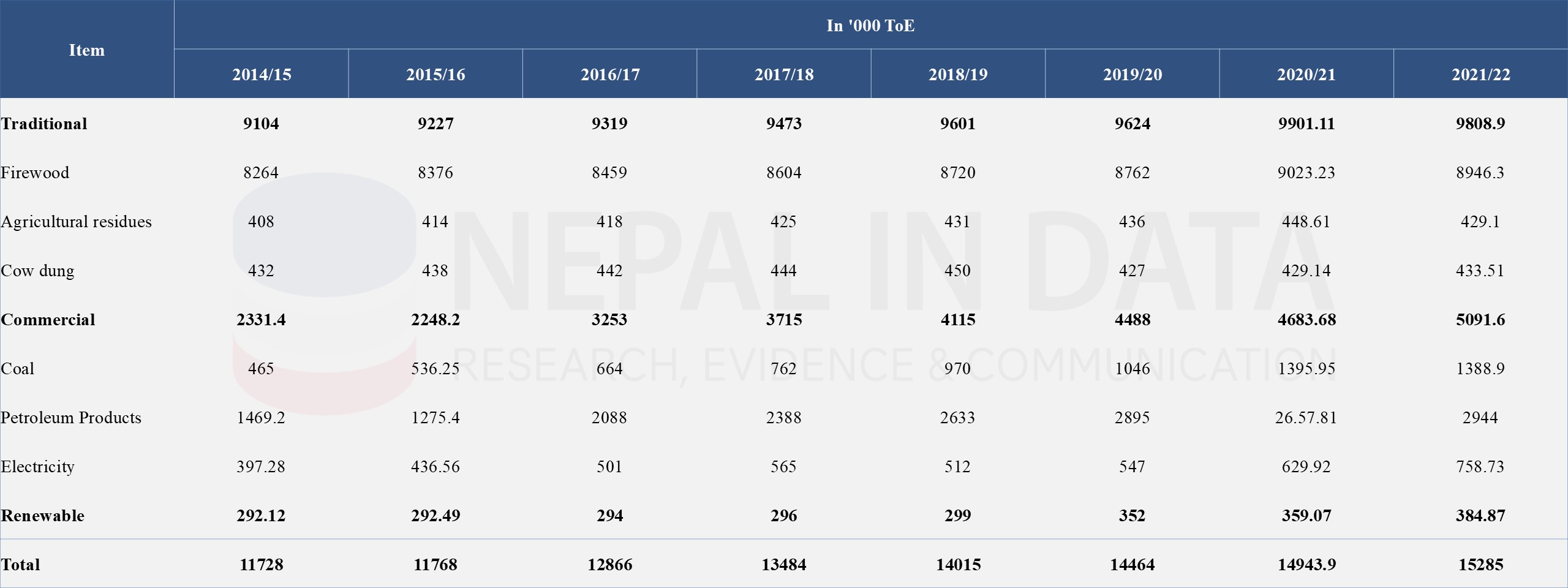 Source: Water & Energy Commission Secretariat 2017 and 2022 and Economic Survey 2022/23
Source: Water & Energy Commission Secretariat 2017 and 2022 and Economic Survey 2022/23
Key Takeaways
Environmental resources are the living and non-living constituents of the earth together comprising the biophysical environment that may provide benefits to humanity. The vital natural resources (renewable and non-renewable) of Nepal include water, forest, mineral, land, soil, and biodiversity by extracting, abstracting, harvesting, or restructuring which directly and indirectly helps in economy and livelihood. These resources are under pressure due to unmanaged developmental activities and human intervention like loss of forest, soil erosion, air pollution, water pollution, unmanaged solid waste, and climate change. Resource management needs to be strengthened and climate-resilient agriculture should be promoted for sustainable development.






